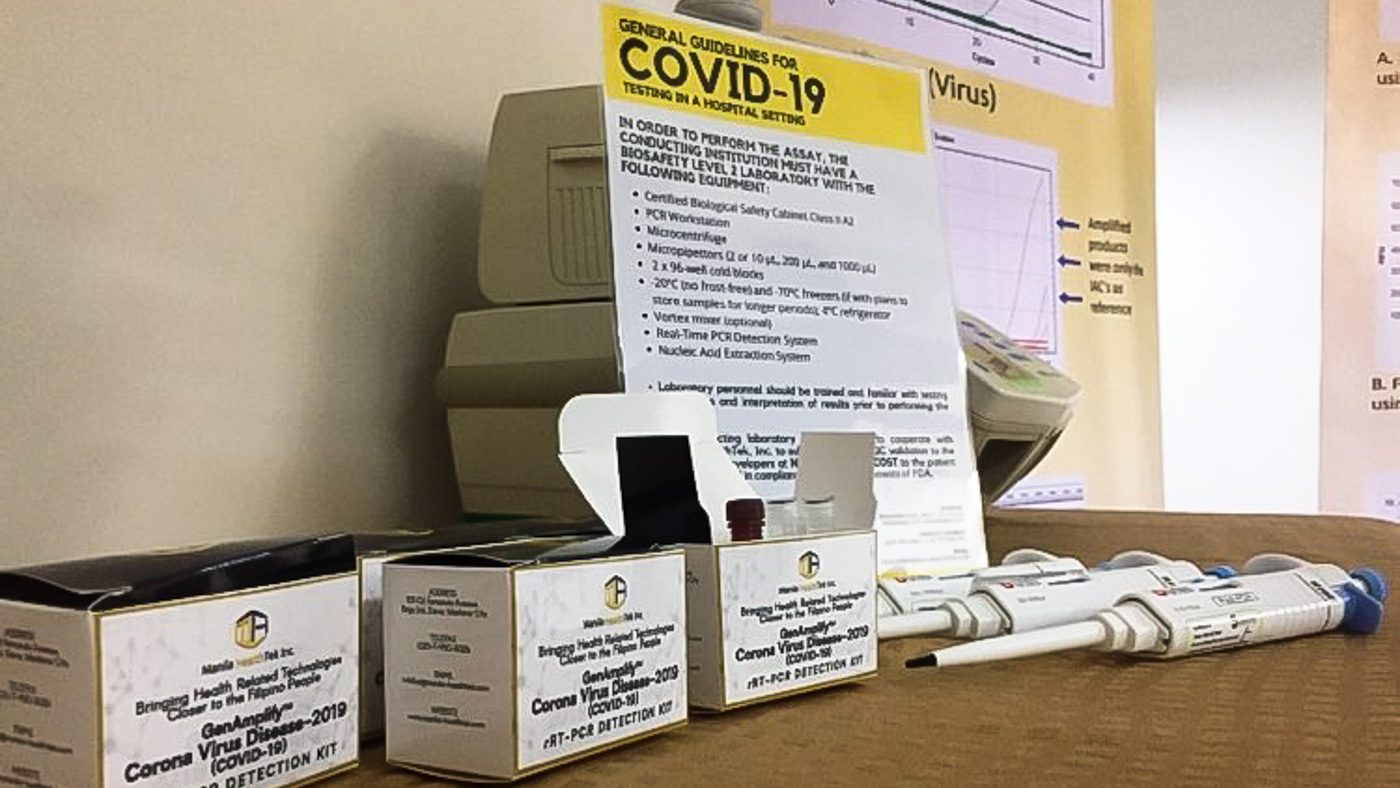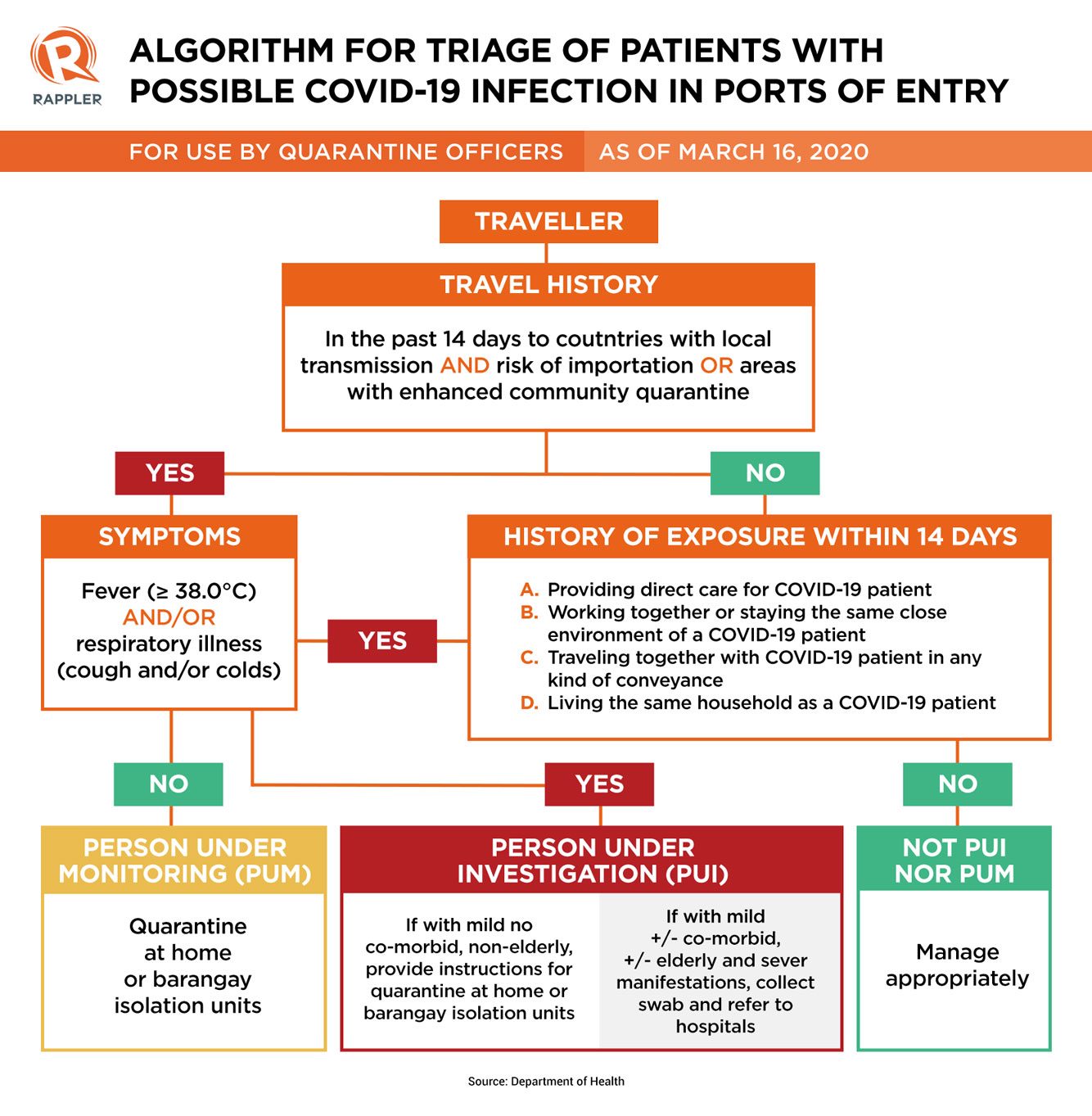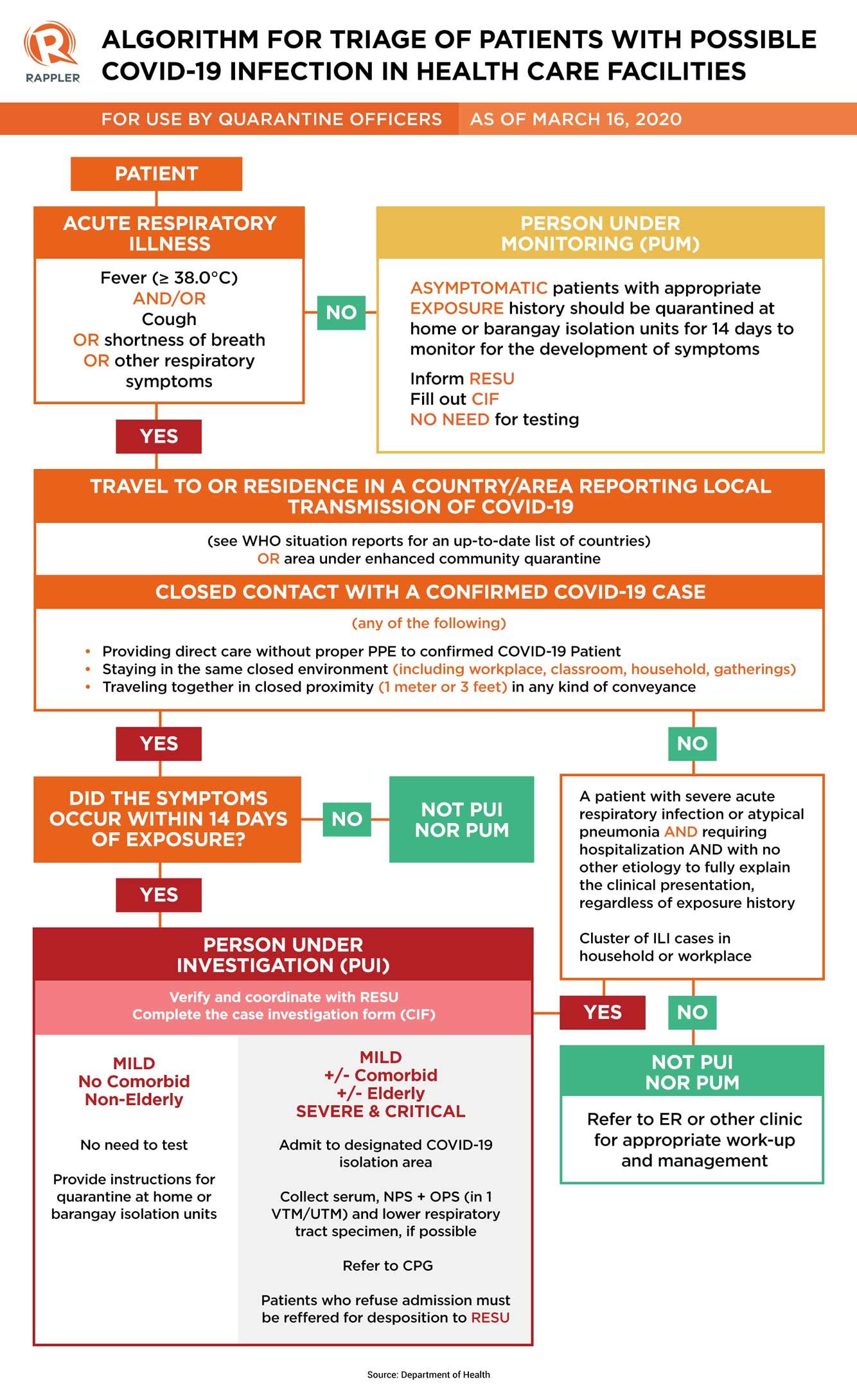SUMMARY
This is AI generated summarization, which may have errors. For context, always refer to the full article.

MANILA, Philippines – In a press briefing on Sunday, March 8, World Health Organization (WHO) Representative to the Philippines, Dr Rabindra Abeyasinghe, clarified that having symptoms of respiratory illness does not automatically mean having COVID-19, the disease caused by the novel coronavirus.
Abeyasinghe said that “we are in that season that we see a lot of flu,” explaining why a lot of people now are experiencing symptoms of respiratory infection.
Should you get tested for COVID-19? Here’s what you need to know:
On Monday, March 16, the Department of Health (DOH) released an updated decision tool on whether or not an individual should get tested for COVID-19.
The DOH categorized individuals who possibly contracted the virus into two: Person Under Investigation (PUI) and Person Under Monitoring (PUM).
PUIs are individuals who have two or all of the following:
- History of travel in the past 14 days to countries with local transmission and risk of importation of the virus
- History of exposure with a confirmed case
- Has symptoms of respiratory illness (cough and/or colds) and/or fever
Meanwhile, PUMs are individuals who have a travel history and history of exposure to a coronavirus patient. They will undergo 14 days of self-quarantine at home or at barangay isolation units.
According to the DOH, a PUI will only be tested if the person is experiencing severe manifestations of symptoms. Elderly who manifest COVID-19 symptoms, whether mild or severe, and those who have underlying medical conditions, will automatically get tested for possible infection.
Mild manifestations include fever, dry cough, fatigue, sputum production, sore throat, headache, myalgia or arthralgia, chills, nausea or vomiting, nasal congestion, and diarrhea.
Severe manifestations include difficulty in breathing or having a respiratory rate of less than 30 breaths a minute.
If you think you have these conditions for testing, all hospitals in the Philippines should be able to admit you and put you in an isolation room while waiting for your COVID-19 test result.
In a chance interview with reporters on Wednesday, March 11, Health Secretary Francisco Duque III said that any hospital that refuses to admit suspected cases of COVID-19 without valid reasons may face sanctions. The DOH said that isolation hospitals in the Philippines have enough bed capacities for cases of COVID-19. (READ: Enough bed capacities for quarantine facilities amid coronavirus crisis – DOH)
The Research Institute for Tropical Medicine (RITM) is the only accredited testing center for COVID-19. Duque said that the Philippine government is working to have 4 more laboratories across the country accredited. (READ: 4 more Philippine laboratories may soon test samples for coronavirus – DOH)
If you are non-elderly, experiencing mild symptoms, and considered a PUM, you will be given instructions for home quarantine or barangay isolation units. (READ: Self-quarantine guide amid coronavirus pandemic: When to do it, what to stock up on)
Below are the decision tools devised by the DOH for quarantine officers and health personnel:


According to the DOH, the COVID-19 test at the RITM ranges from P5,000 to P8,000, including the extraction steps that cost around P1,200 to P1,500. The testing kit developed by the scientists of the University of the Philippines (UP) would undergo field testing on Monday, March 16. The UP test kit costs around P2,700-P3,500, including extraction procedures.
As of Monday, March 16, the DOH confirmed 142 confirmed cases in the country, 12 of whom have died. – Rappler.com
Add a comment
How does this make you feel?
There are no comments yet. Add your comment to start the conversation.